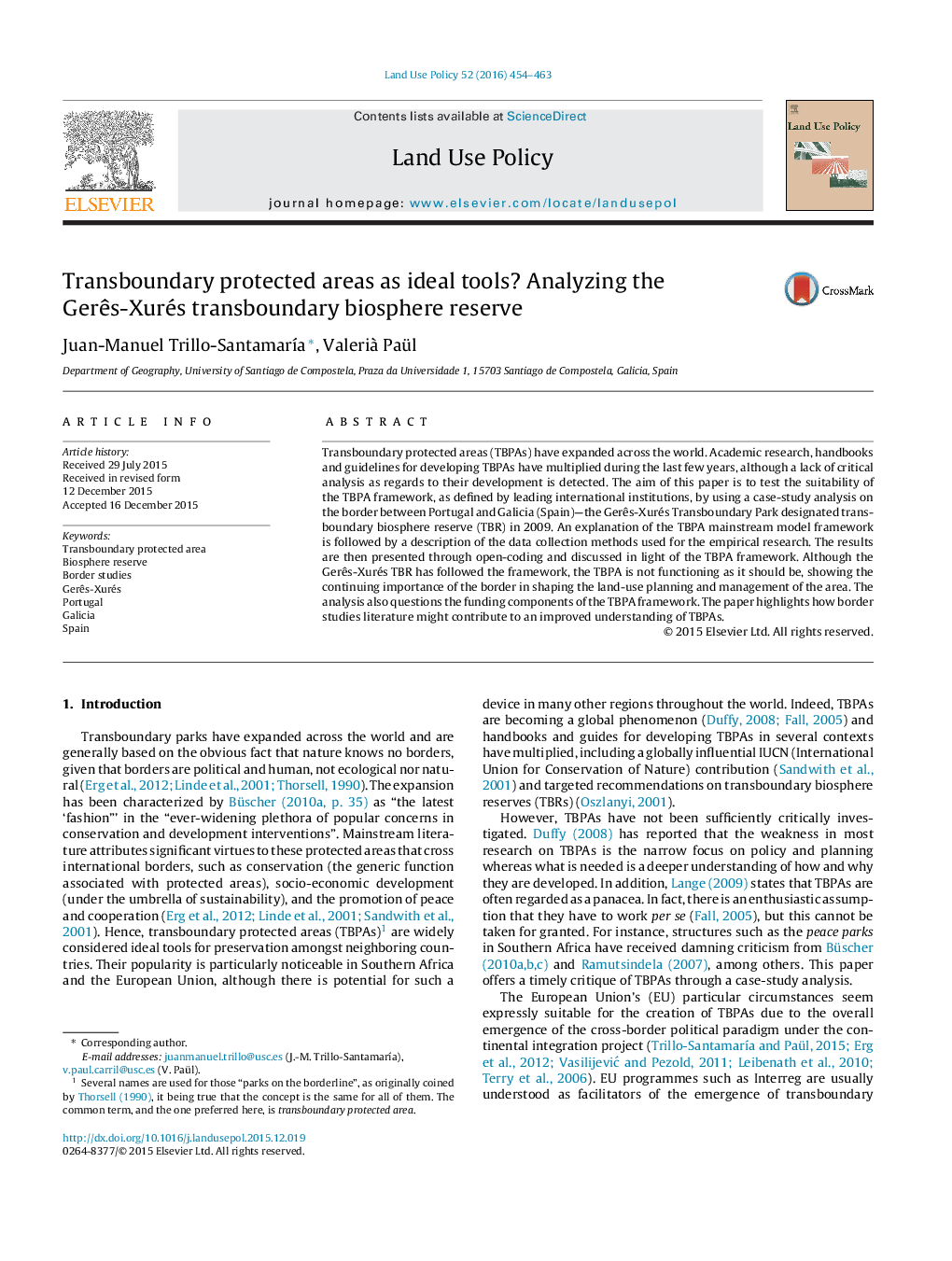| Article ID | Journal | Published Year | Pages | File Type |
|---|---|---|---|---|
| 6547516 | Land Use Policy | 2016 | 10 Pages |
Abstract
Transboundary protected areas (TBPAs) have expanded across the world. Academic research, handbooks and guidelines for developing TBPAs have multiplied during the last few years, although a lack of critical analysis as regards to their development is detected. The aim of this paper is to test the suitability of the TBPA framework, as defined by leading international institutions, by using a case-study analysis on the border between Portugal and Galicia (Spain)-the Gerês-Xurés Transboundary Park designated transboundary biosphere reserve (TBR) in 2009. An explanation of the TBPA mainstream model framework is followed by a description of the data collection methods used for the empirical research. The results are then presented through open-coding and discussed in light of the TBPA framework. Although the Gerês-Xurés TBR has followed the framework, the TBPA is not functioning as it should be, showing the continuing importance of the border in shaping the land-use planning and management of the area. The analysis also questions the funding components of the TBPA framework. The paper highlights how border studies literature might contribute to an improved understanding of TBPAs.
Related Topics
Life Sciences
Agricultural and Biological Sciences
Forestry
Authors
Juan-Manuel Trillo-SantamarÃa, Valerià Paül,
